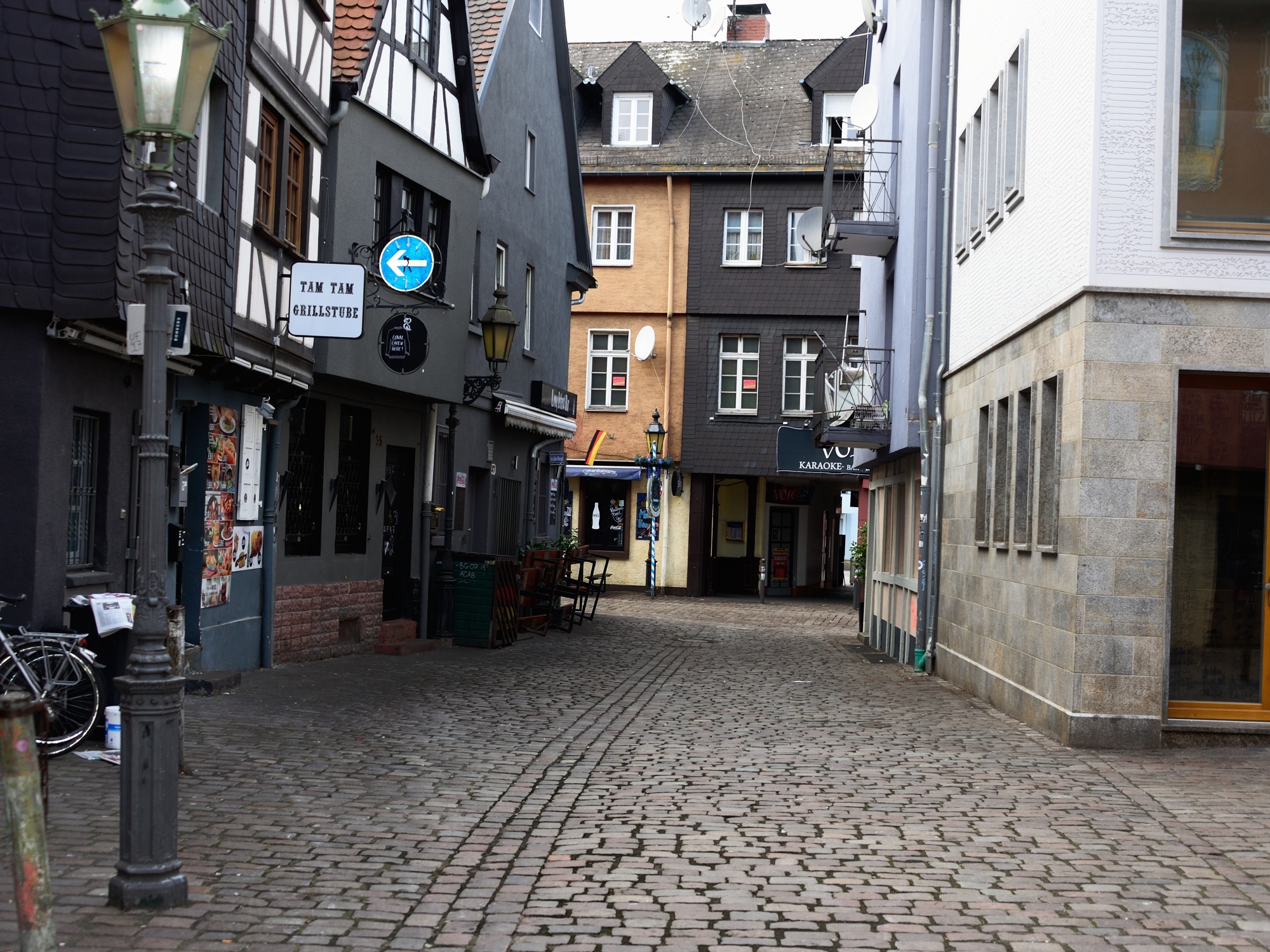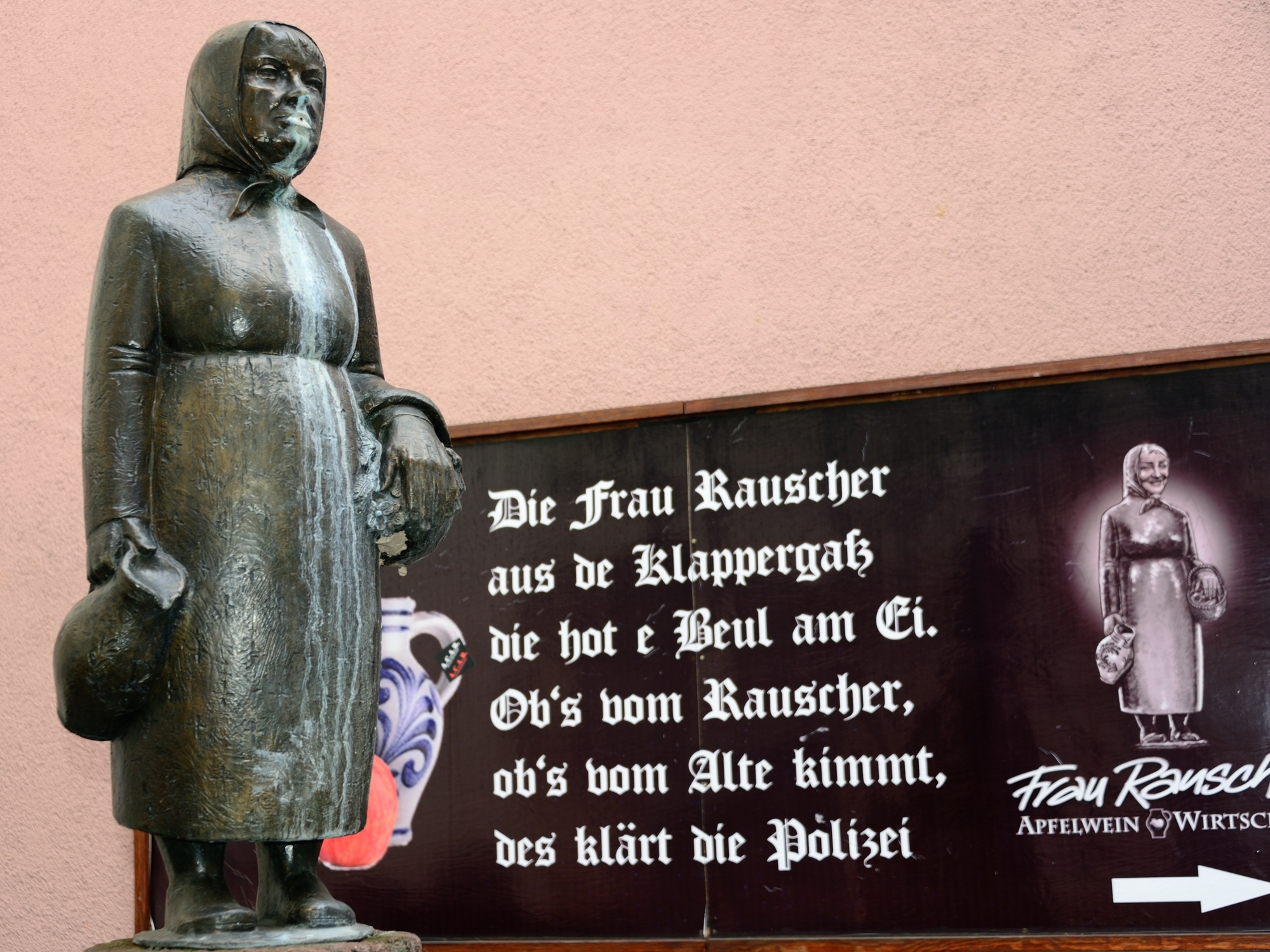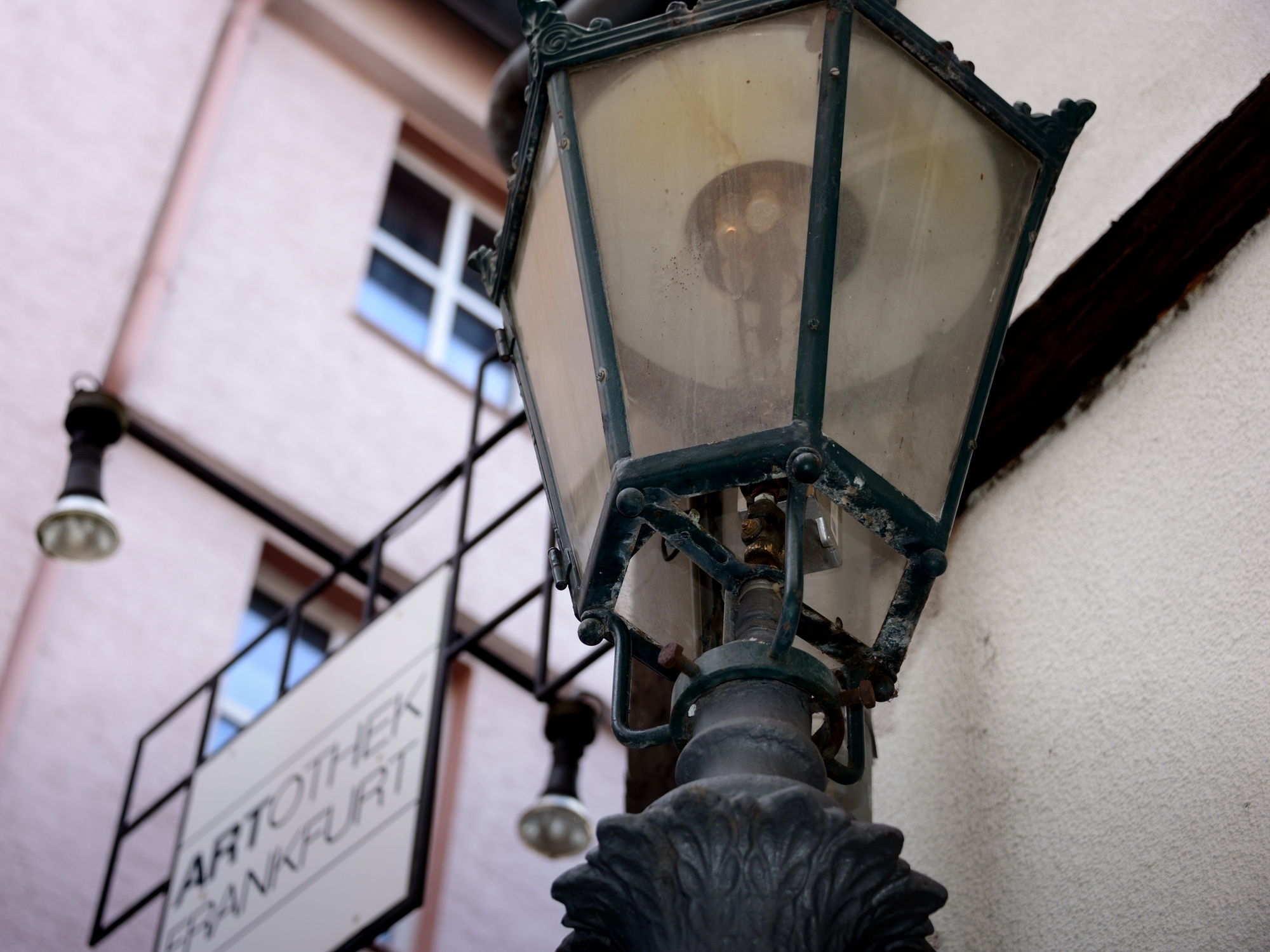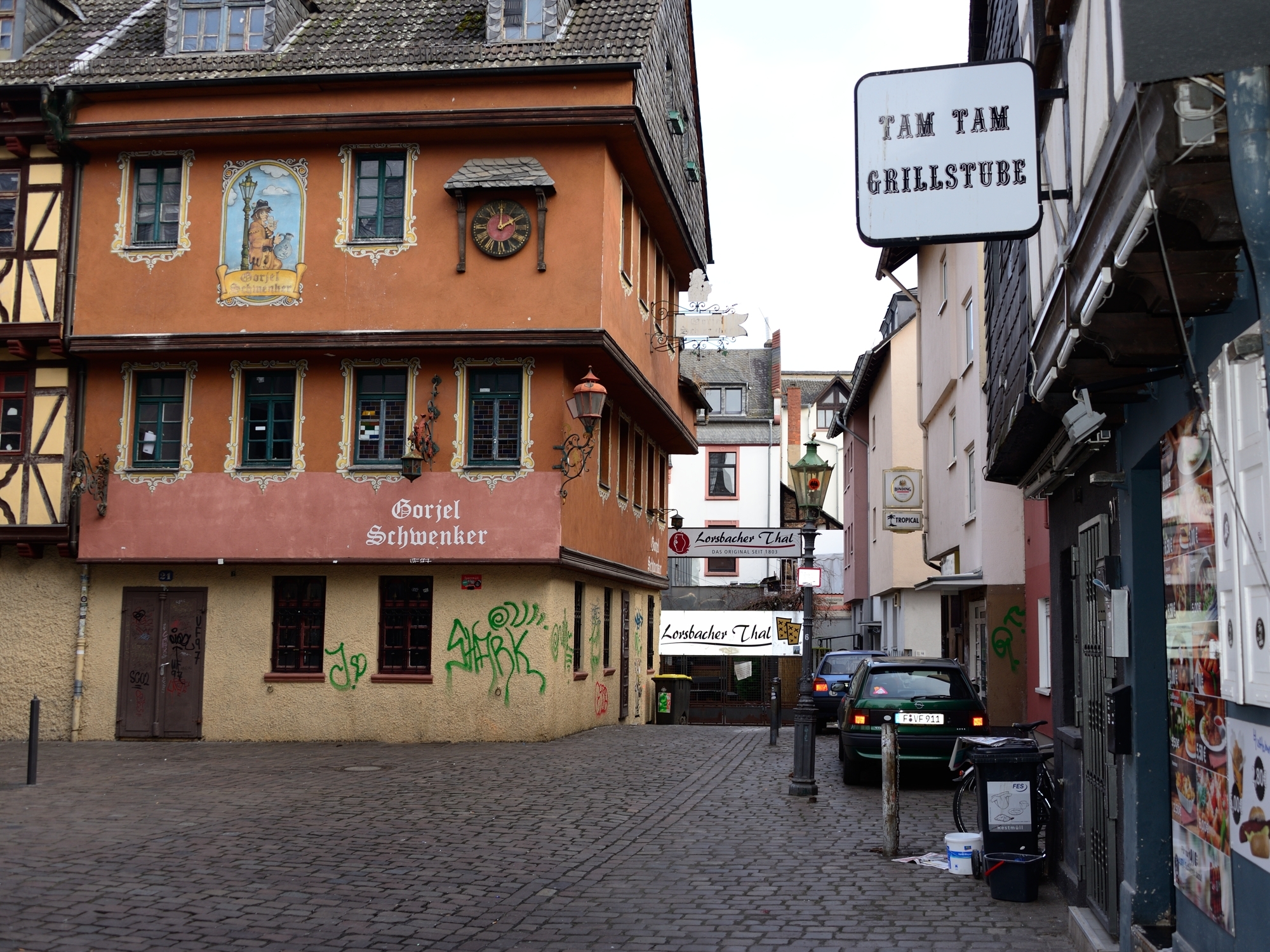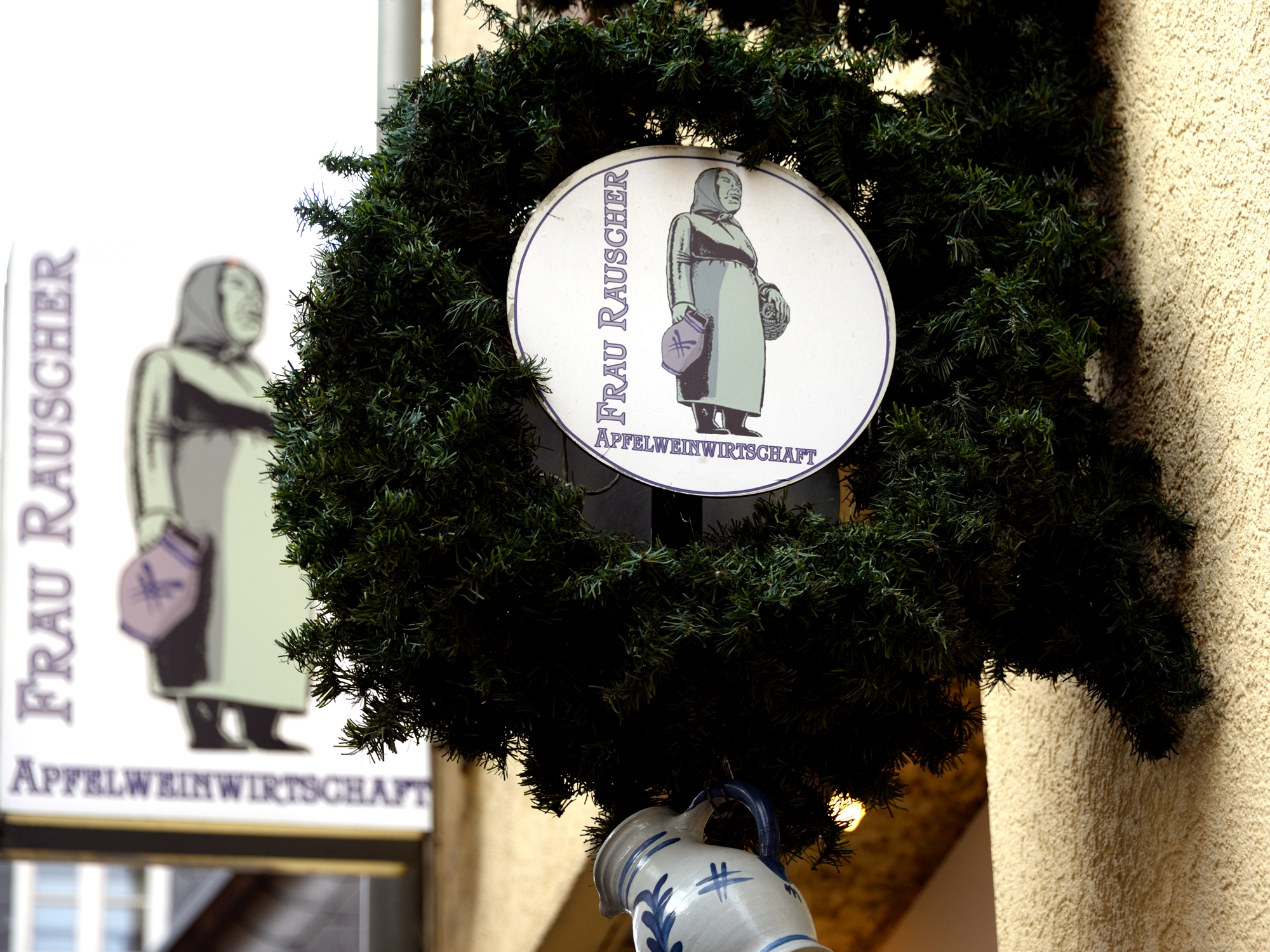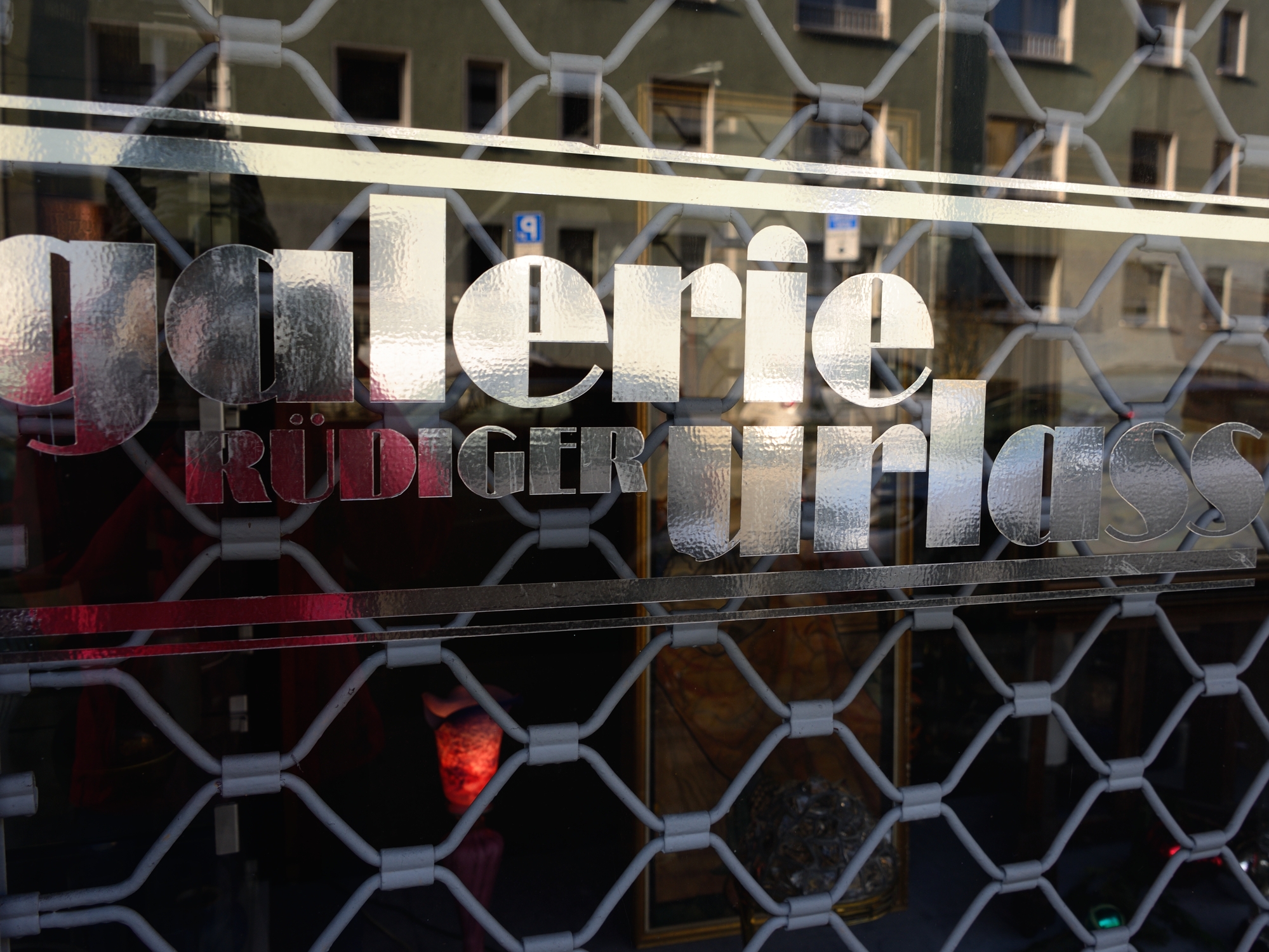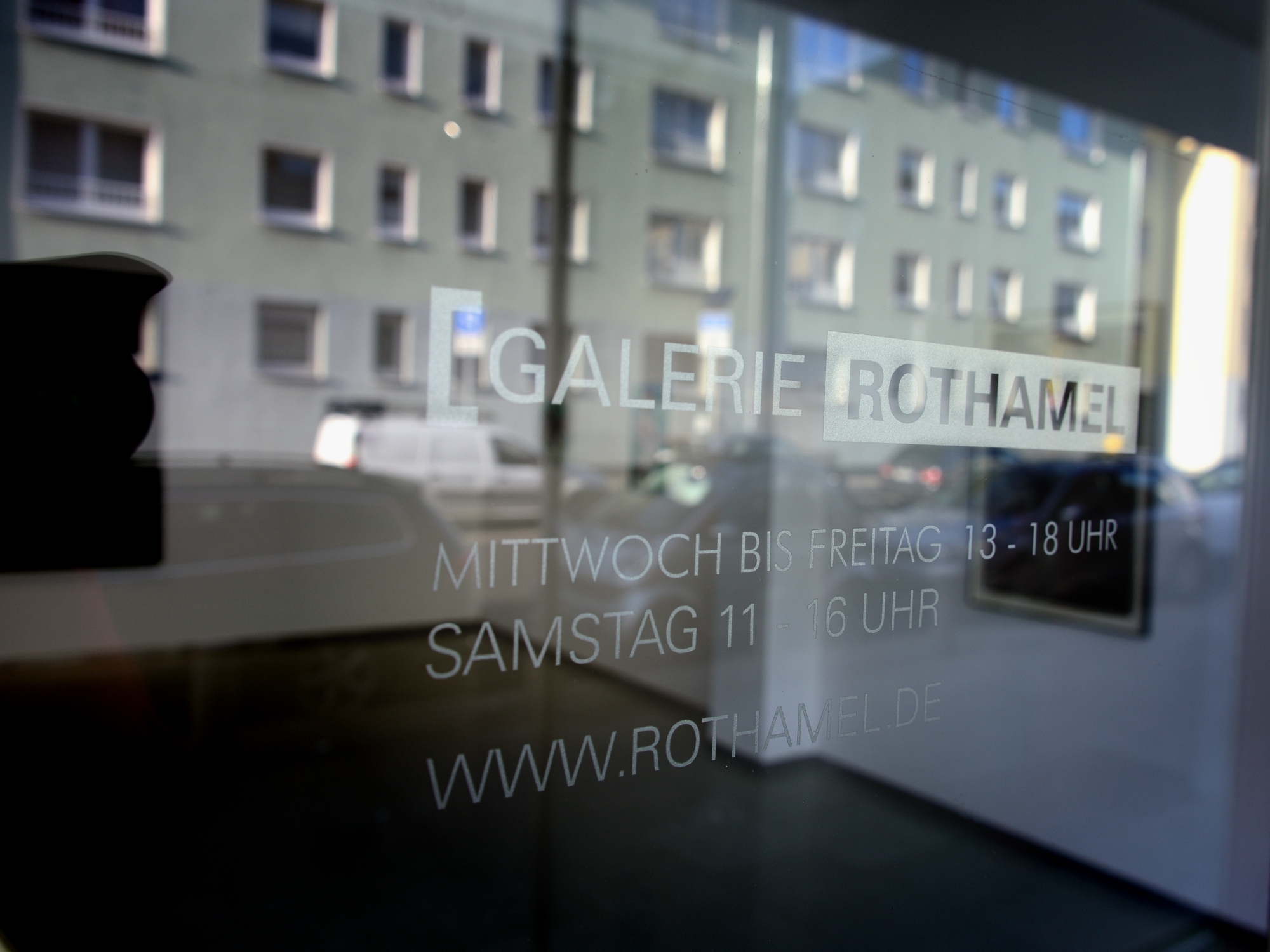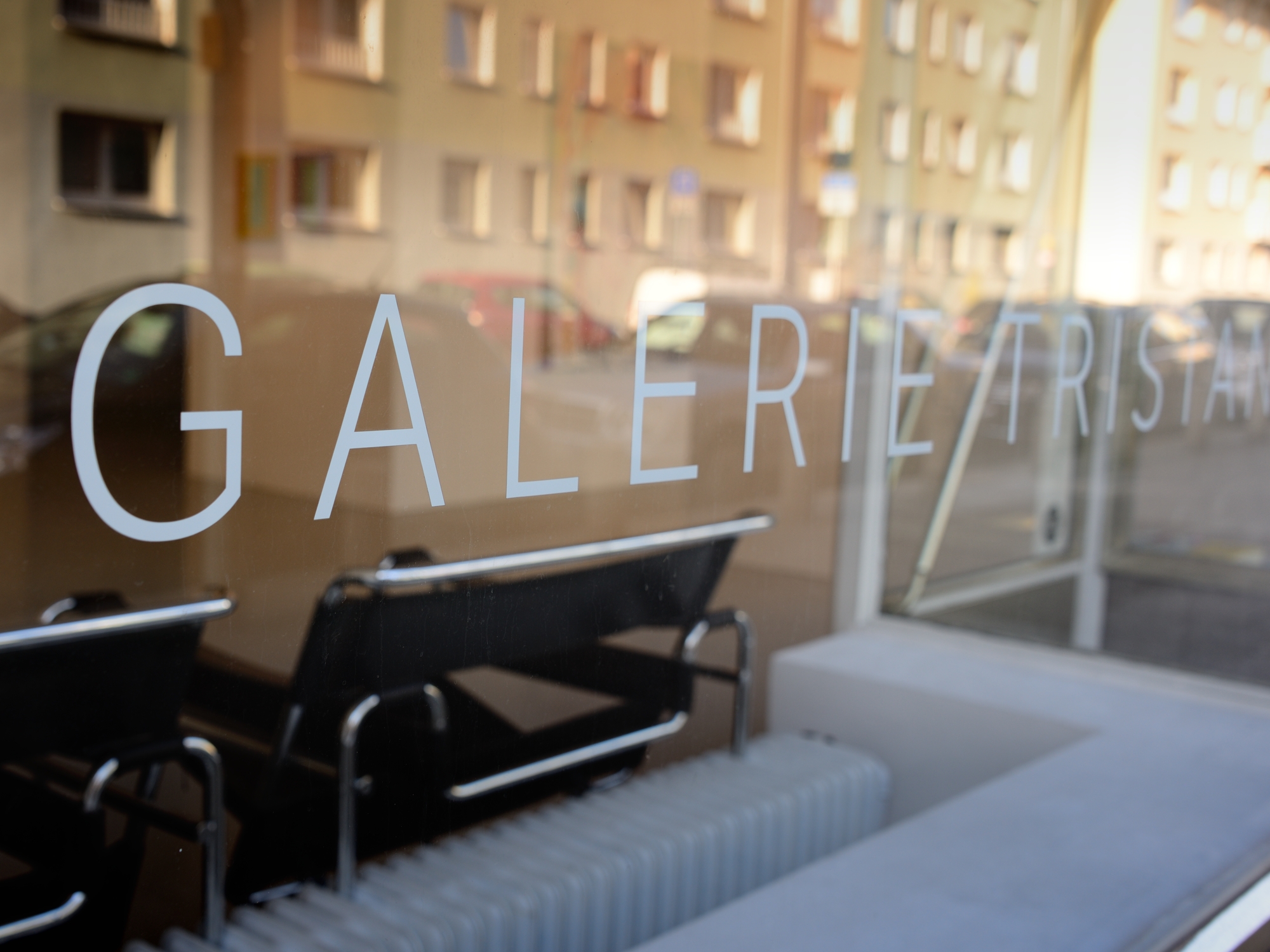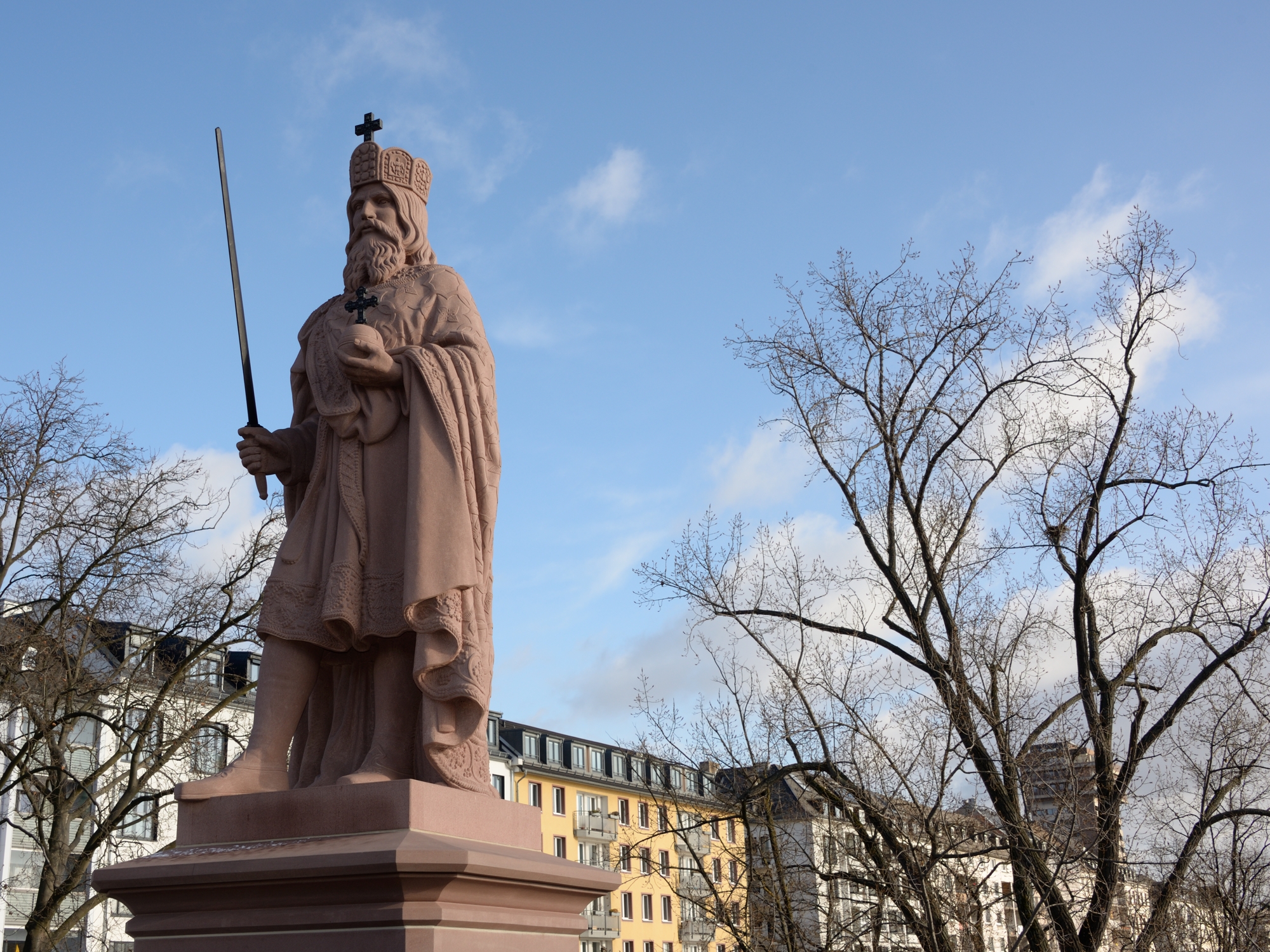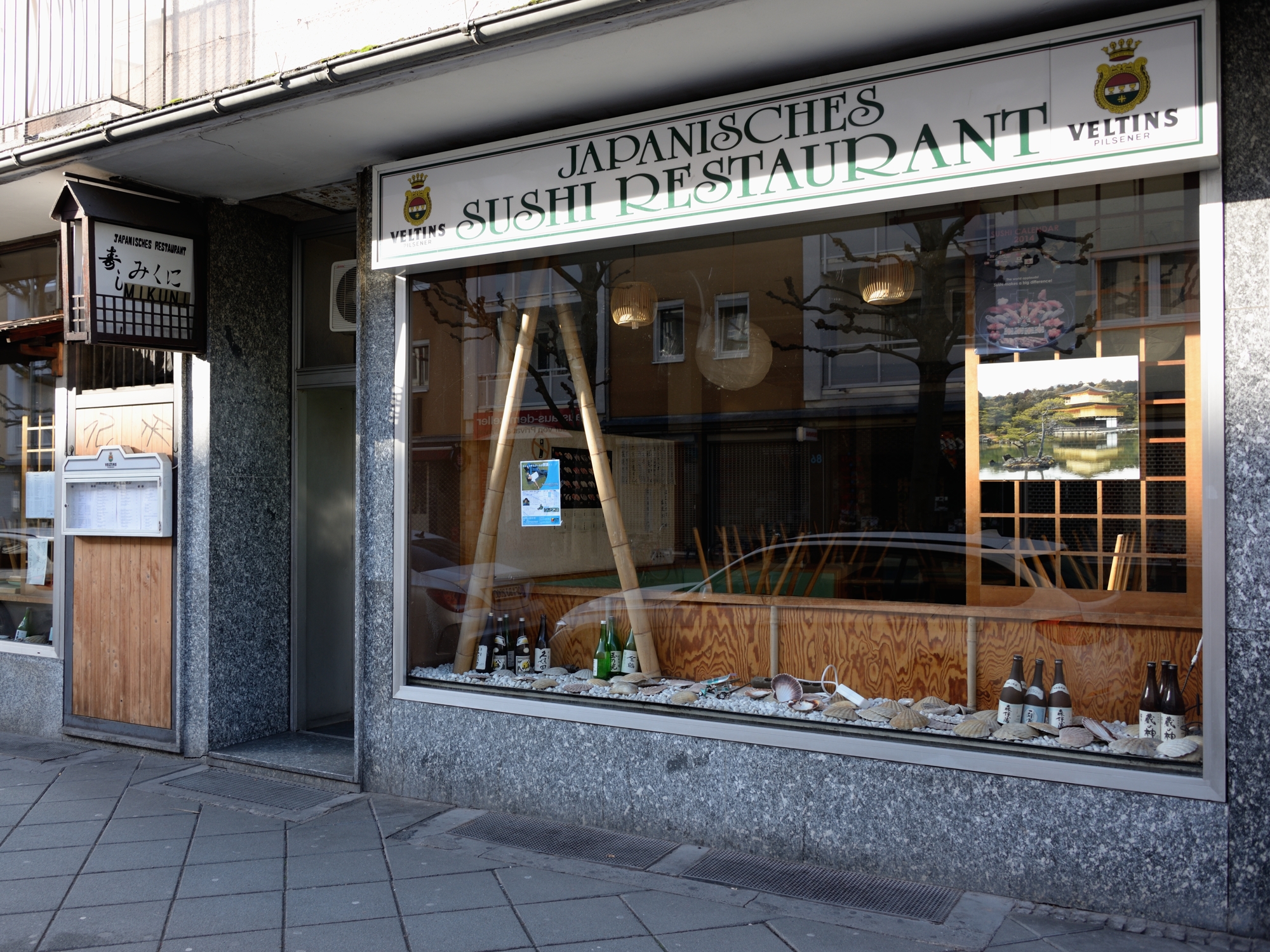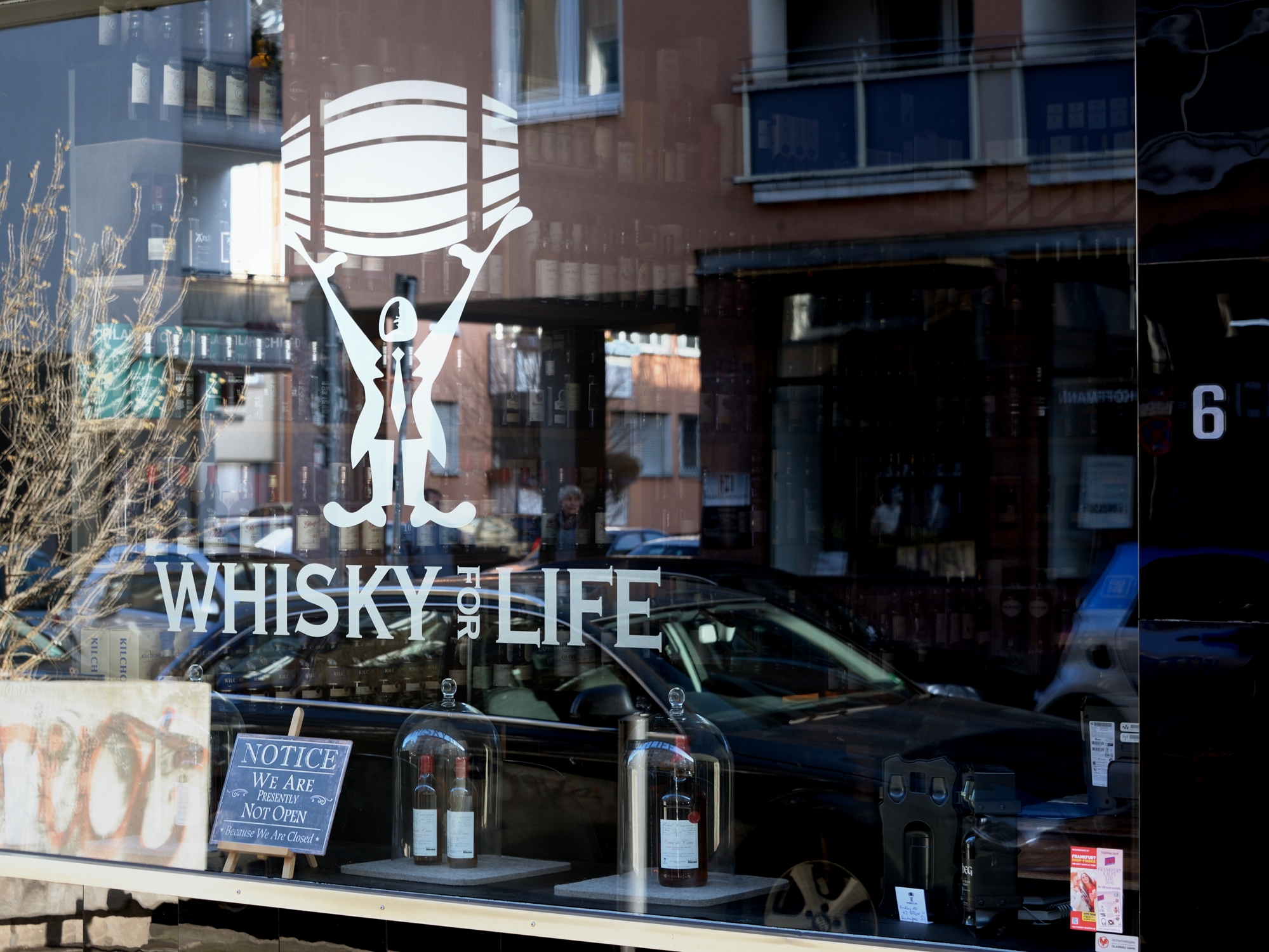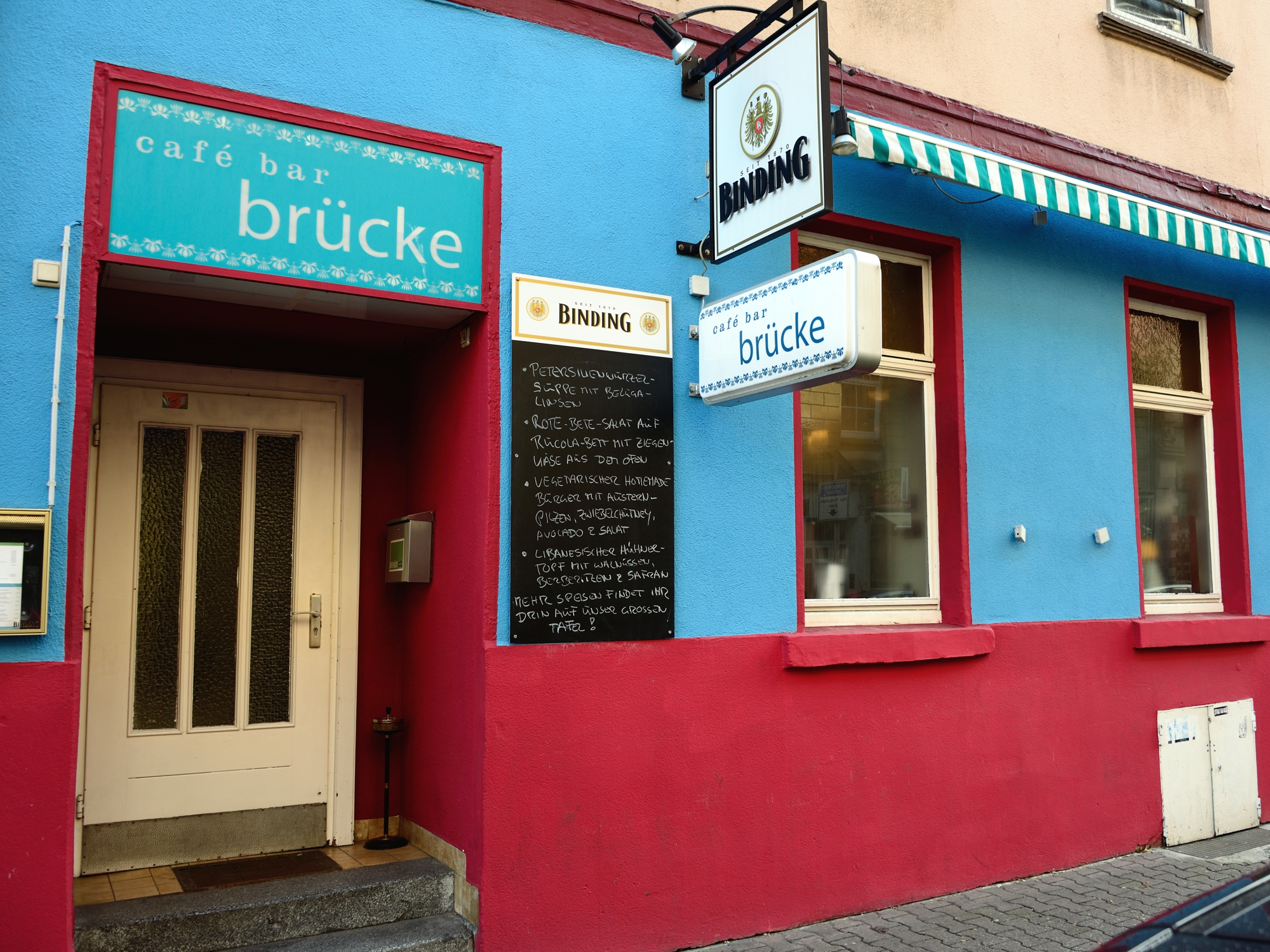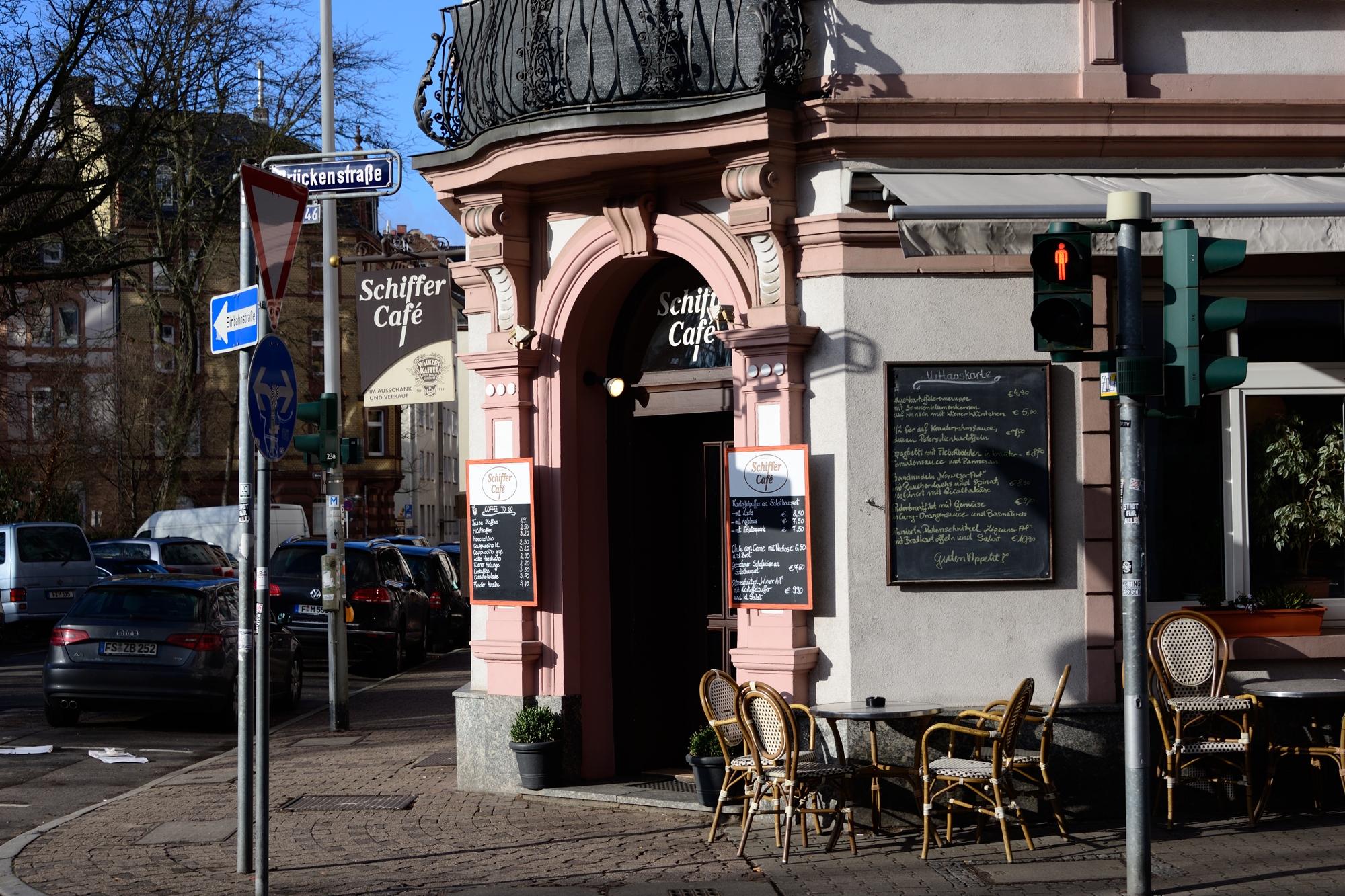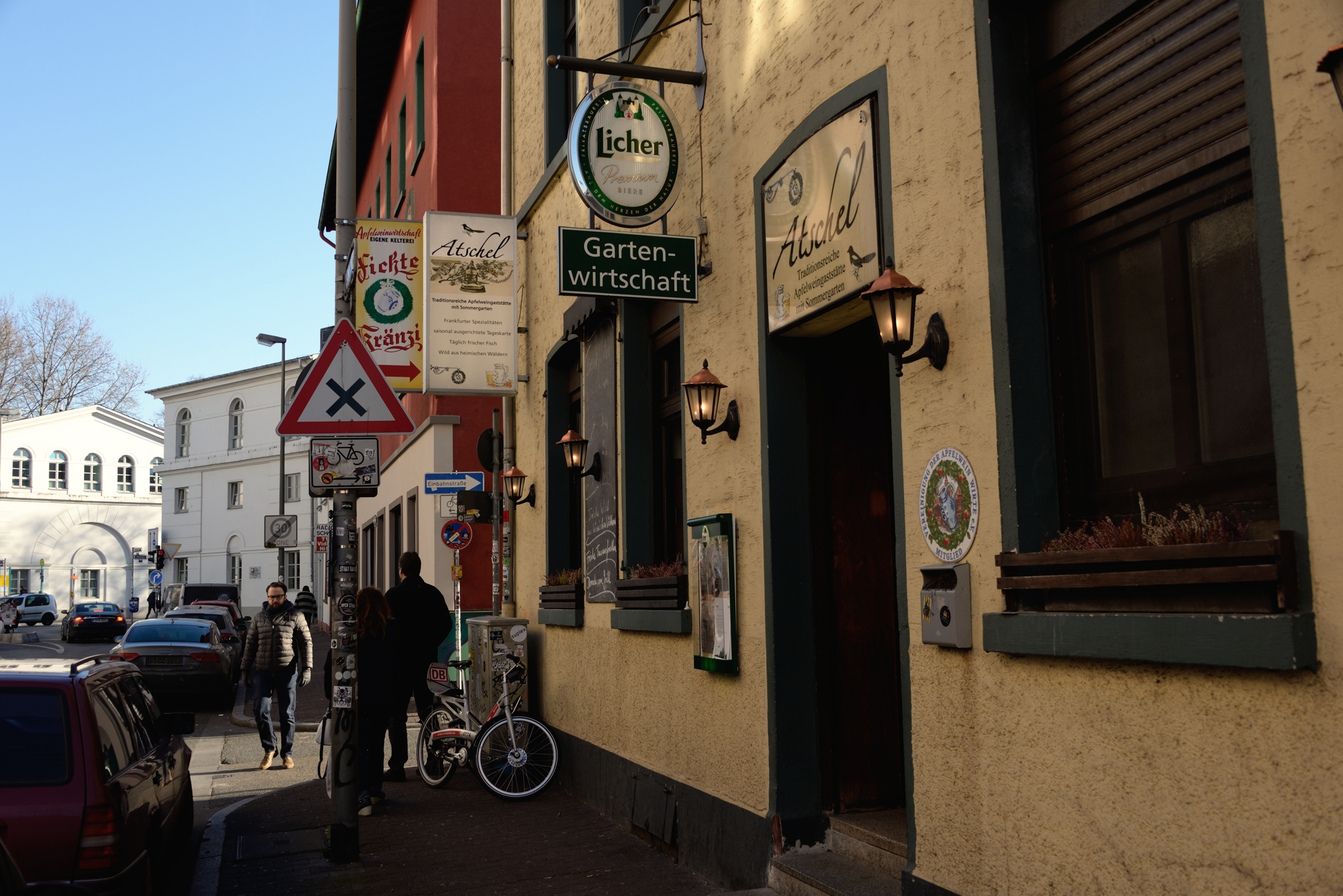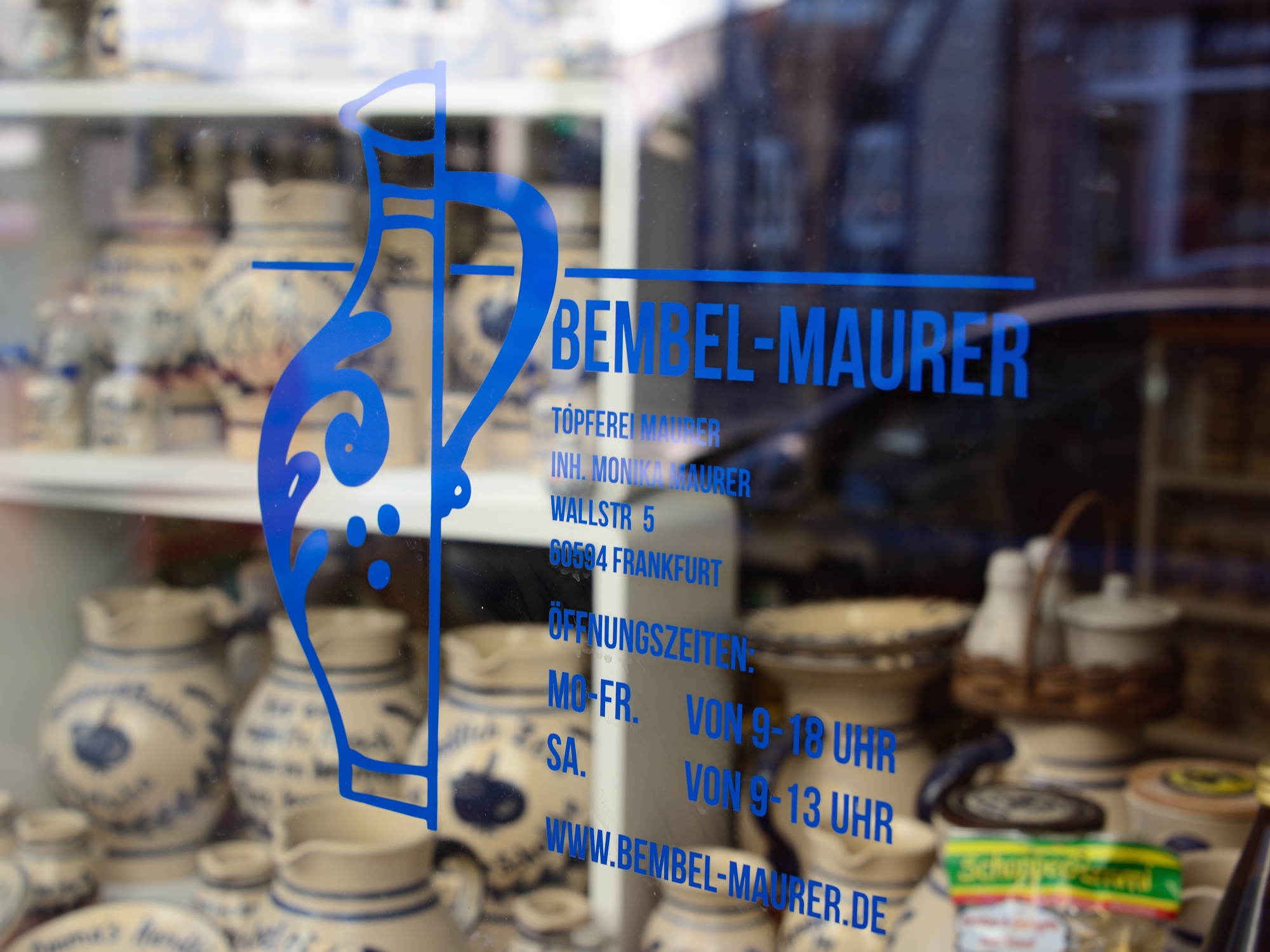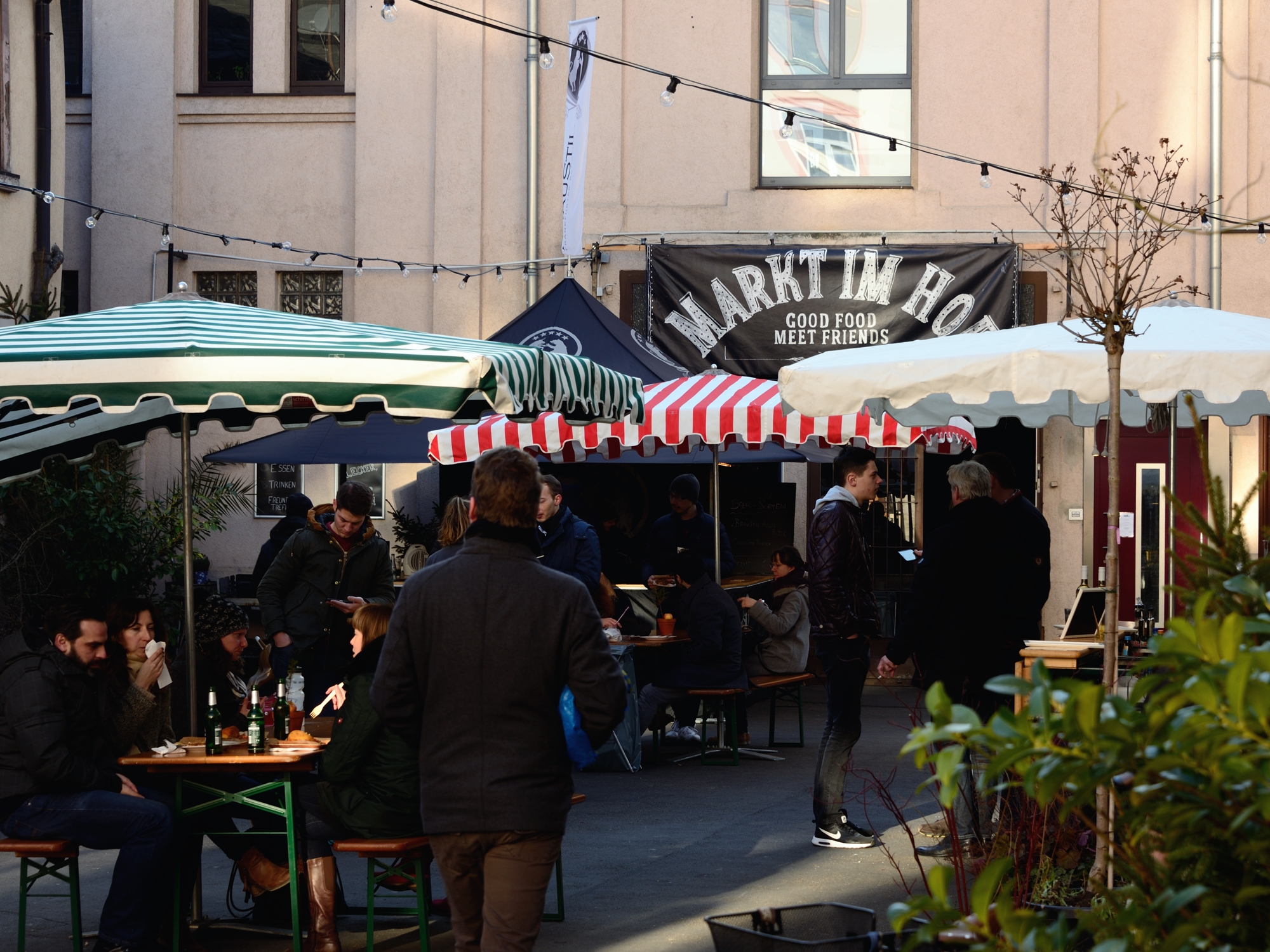Walking around old Sachsenhausen (Alt Sachsenhausen)
Old Sachsenhausen, south of the river, is a unique part of Frankfurt. Today the area comes alive at night, crammed as it is with bars, clubs and apple wine taverns but take a closer look and you will notice traditional cobbled streets, gas lamps and old medieval houses.
Große Rittergasse, Sachsenhausen in Frankfurt
First mentioned in a document back in the 12th century, old Sachsenhausen became the place where the fishermen, weavers, and the other poorer classes lived. The area survived the devastation of the second war and today offers a glimpse into the Frankfurt of old.
The easiest way to get to old Sachsenhausen is to walk cross the Alte Brücke (notes on other routes are at the bottom of this page). Once on the south side of the river, look in the direction of 10 o'clock and you'll see a side street (Große Rittergasse) running behind the youth hostel. Follow the side street and you'll suddenly find yourself standing next to the Kuhhirtenturm, the cowherds tower. Today it serves as a museum dedicated to the composer Hindemith, who converted the tower into accommodation and whose family lived here from 1923 until 1943. Only open on Sundays, it a great little museum offering information in English and German. The link above offers more details.
Kuhhirtenturm, now a museum to the composer Hindemith, open on Sundays.
Wander along Große Rittergasse. Many of the bars and building you see are old timber frame houses but the facades were covered over in a post war attempt to modernise the rickety old buildings. At the junction of Frankensteiner Straße stands one of many traditional water fountains you can find around old Sachsenhausen. These pink sandstone pillars, decorated on top with statues of people, animals and, in one case, even an artichoke were meticulously restored by Georg Krämer in the 1950/60s. Every year since 1490 the local folk of Sachsenhausen host a fest (during the 3rd weekend in August) to celebrate the fountains and their vital source of water.
If you are in the mood for a coffee stop by the Libertine cafe which offers home-made cakes in the afternoon. It also offers breakfast and in the evening the cafe becomes a trendy bar!
Next, wander up the cobbled lane of Kleine Rittergasse. If you're here in the evening stop by the street lamps and take a close look. Many of these old lamps are still lit by gas, if you're not sure whether it's a genuine old lamp or not, have a listen and you'll hear the gentle hiss of gas. Near the top of Kleine Rittergasse, turn left into what looks like a dead end. Ahead of you is the back entrance to "Lorsbacher Thal" one of the traditional apple wine taverns, with a good reputation too. An idea place to stop and enjoy traditional fare such as Handkäse, grüne Söße and of course, apple wine.
Never heard of apple wine? More information is available on my apple wine blog post, but back to the business of old Sachsenhausen...
From the back entrance of the Lorsbach Thal, you can turn the corner and head left onto Klappergasse. More old houses and gas lamps, but this lane is particularly famous for it's statue dedicated to Frau Rauscher, who spits water at unsuspecting passers-by. She was a local character, known for drinking a little too much apple wine and even has a poem dedicated to her antics, this English version isn't a direct translation but works well as a rhyme: Mrs Rauscher’s been found with a bump on her head. Whether from apple wine or her old man, at least she ain’t dead.
Summa Summarum, a great little live band venue and jazz club deep in the cellar of this old 17th century building
Wander back up Klappergasse and keep your eyes open for brass apples in the cobble stones which are a nod to the apple wine heritage of the area. At the end of the street join Kleine Rittergasse and walk towards Paradiesgasse. Turn left and in 30 metres turn left again onto Neue Wall. Here you find more apple wine taverns, the two best being Klaane Sachsenhäuser with it's lovely courtyard and Daheim in der Affentor Schänke. Alternatively, turn right and cross over the road into Wallstraße for the opportunity to explore more of Sachsenhausen as detailed in my other blog post, Konstablerwache to Sachsenhausen.
Brass apple depicting the trail through old sachsenhausen
Map and directions
Alt Sachsenhausen
A larger map detailing highlights of this blog is linked here. To get to old Sachsenhausen using public transport, take tram number 14 or 18 and alight at Frankensteiner Platz, or take the S-bahn or U-bahn to Südbahnhof and exit via Diesterwegplatz.
If you are in the area, don't forget the flea market, held every fortnight on a Saturday along the Museumsufer. Click on this link for up to date information.
The Museumsufer, which runs along the south bank of the river Main, offers plenty of museums to visit. This museums link will tell you more.
Frankfurt: from Konstablerwache to Sachsenhausen
January, February and March are cold months in Frankfurt. Even so it's still possible to explore and, by browsing a shop or two or enjoying a new cafe, you get the chance to intermittently warm up. The walk I'm suggesting for such a Winter's day takes you into what appears to be an unassuming part of town, filled with 1950's post war architecture but delivering some lovely cafes, galleries and views which you might otherwise never notice. The walk is simply a straight line from north to south and over the river.
Starting at Konstablerwache, if it's Thursday or Saturday you have the chance to peruse the farmers market, eat a bratwurst and have a glass of Glühwein from one of the wine stalls. From Konstablerwache head south, down Fahrgasse.
Fahrgasse, starting at Konstablerwache in the heart of Frankfurt
Within 100 metres, you'll notice a large wall on the left hand side of the street. It's a fragment of the old medieval wall from the 12th century, the Staufenmauer. It also served as the northern entrance to the Jewish Ghetto, the Judengasse, decreed in 1462 and the first Jewish ghetto in Europe. Destroyed in the late 1800's, nothing remains of the ghetto today.
An der Staufenmauer, at the junction of Fahrgasse and Töngesgasse
Carry on heading south and the first half of Fahrgasse has a variety of Asian stores and if it's lunch time you might want to stop by one of the authentic restaurants, e.g. Mikuni, and have a bite to eat. If you prefer a coffee then carry on down Fahrgasse, crossing over Berliner Strasse and towards the river. This half of Fahrgasse has antique shops and galleries on both sides of the street that are worth a browse.
Part way down the street, on the right hand side, is a small street called Weckmarkt. At the very entrance of this street is a modern jewellery store called "feinform" which offers some interesting contemporary pieces and is worth a peek. Back onto Fahrgasse and a little further south is a whiskey shop, Whiskey for Life which is every whiskey drinkers dream. If you're lucky you might catch a tasting. Opposite on the other side of the street is the Holy Cross Brewing Society, reputedly one of the best coffee stops in town. In fact, you're spoilt for choice for places to relax and eat in this area. Check out Cafe Sugar Mama , Naiv and Langosch.
If you're not quite ready for a stop then walk to the end of Fahrgasse and onto the Alte Brücke. As you step onto the bridge look to your left to see the fine statue of Karl der Grosse, aka Charlemagne. He was the King of the Frankish tribesmen and the first person to be crowned Holy Roman Emperor. He's also gave Frankfurt it's name which means, 'the ford of the Franks'. As you cross the bridge, take in the view of the ECB, European Central Bank on the left hand side and get your camera ready for the classic 'Skyline' view of Frankfurt to your right. Once over the river, keep to the left hand side of the bridge and at it's end, cross over the road (Sachsenhäuser Ufer) and head straight down the side street which is the beginning of Brückenstraße. Almost immediately you'll discover the entrance to the Ikonen Museum which has quite the collection of religious artefacts. Next door is the Deutschordenskirche. It's usually open by 12 noon, so step inside and take a look around. If it's January you're in for a special treat because the nativity scene is quite something to behold.
Ikonen Museum, Frankfurt.
From the church, continue down Brückenstraße, over the junction. You're now in the heart of Sachsenhausen. Immediately to your left is the Brücke Cafe, serving coffee, home-made cakes, drinks and meals late into the evening. Further down the street are clothing boutiques and plenty of stores for window shopping. One highlight is the Portuguese gourmet shop at number 60 - Casa de Portugal Here you can buy groceries, port, terracotta pots and freshly baked Portuguese specialities. It's a great little place. Down at this corner of Brückestraße is another great cafe, Schiller Cafe, serving breakfasts and meals all day.
Wander back up Brückestraße, and turn right (east) along Wallstraße. Again, this street hosts an array of independent shops, restaurants and in particular two classic apple wine taverns, Fichtekranzi and Atschel (Atschel is usually open at lunch time) Next door to Fichte Kranzi is a traditional pottery shop, Töpferei Maurer, selling all things pottery related to Frankfurt's apple wine scene. On Saturdays there is also Markt im Hof, a small venture hosting a couple of food trucks, apple wine tastings and an indoor canteen with innovative choices of food. It's a real favourite with the locals!
By now you've probably seen a few places where you'd like to stop, eat and relax. If you're still in the mood for exploring then look out for my next blog post which will take you across the road and into the heart of Old Sachsenhausen!
Where to stay in Frankfurt for maximum access to the sights
This is not a hotel guide, it's a location guide; which location to choose in Frankfurt to maximise being out and about and seeing all the highlights. Frankfurt is a small city with a great local transport system. However, if you want to step out of your hotel and walk into the old town, where do you stay?
There are three key areas that tourists find themselves in. First, the Bahnhofsviertal by the main railway station (Hauptbahnhof) which is close to the Messe for the trade fairs and highlighted in red on the map below. Second, the Innenstadt and old town which is the heart of the city and highlighted in blue on the map. Lastly, Old Sachsenhausen famed for its apple wine taverns and lively nightlife, and known as the Brückenviertal highlighted in purple on the map.
The Innenstadt, old town and heart of Frankfurt
This is the place to stay if you want to step out of your hotel and explore the heart of the city (highlighted in blue on the map). The area is geographically identified by a green park that circles the city centre and the park is the path of the old medieval city walls. Any hotel in this area is central. There are plenty of bars and restaurants in the heart of the city and all are accessible without the need for transportation. Walking to the river bank will take a maximum of 10 minutes and from there you have access to the south side of Frankfurt, Sachsenhausen, with its museums and apple wine taverns. At the end of the night, if you're too tired to walk, a taxi is going to cost less than 10€ to get you back to your hotel. From the airport, getting into central Frankfurt is easy using the S-bahn. The S8 and S9 trains from the airport will bring you to three stops in the city centre - Tanusanlage, Hauptwache and Konstablerwache. My one caveat for this area is the eastern end of the Zeil where the Zeil meets Breite Gasse. This very small, contained area is seedy and run down, so worth avoiding.
Frankfurt Bahnhofsviertal, Hauptbahnhof and Messe
The main railway station is 1km to the west of the city centre and it has the biggest concentration of hotels. Unfortunately it's also the red light district and struggles with a drug problem. The area is outlined in red on the map. The concentration of hotels is a legacy from when the railway station was first built and, at that time, the area was one of the nicest in the city. Post war, Frankfurt made a name for itself hosting World class trade fairs and the trade fair exhibition centre is about 500 metres north of the railway station. These days it is still the place where most tourists book a hotel room, but the reality is you will need to use local transportation to explore the nicer parts of Frankfurt unless you are a keen walker. The area around the station is slowly improving with a few trendy bars and some good Thai and Chinese eateries, not to mention the excellent Turkish restaurants on Münchener Strasse. The hostels in this area, which cater for backpackers, are well maintained, safe and security conscious. If you are booking a hotel close to the railway station then my recommendation is to book one south of Kaiserstrasse. The drugs and red light area tend to be north of this street. The added advantage of being south of the station is that you are close to the river bank, which offers a lovely walk into the old town.
Hotels very close to the Messe (trade fair centre) are also away from the problem areas near the main station. However, this area is geared towards the business traveller and doesn't have much to offer except chain restaurants and a sterile environment.
Old Sachsenhausen, the Brückenviertal
There is very little provision of hotels south of the river in Sachsenhausen (the area with a purple outline on the map.) The international youth hostel is here and very well located for enjoying the night life and offering a quick walk across the bridge into Frankfurt city centre. Being residential, Sachsenhausen is the sort of place to stay if you prefer quieter areas, with plenty of local bars and restaurants but without the city noise. A short walk over the Eisener Steg will bring you to the heart of the old town, or use the local transport system to get around.




